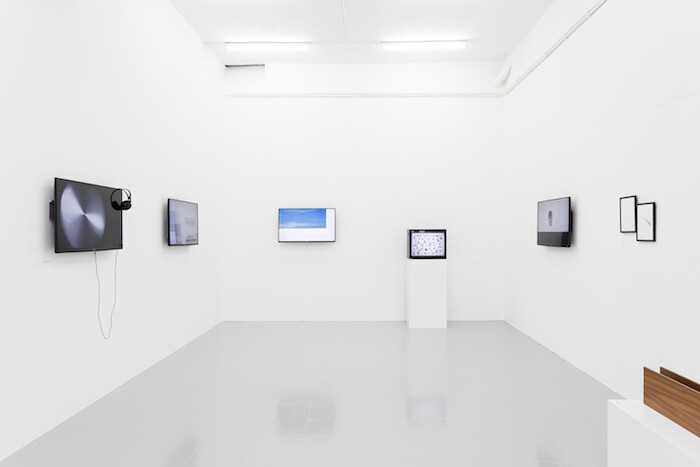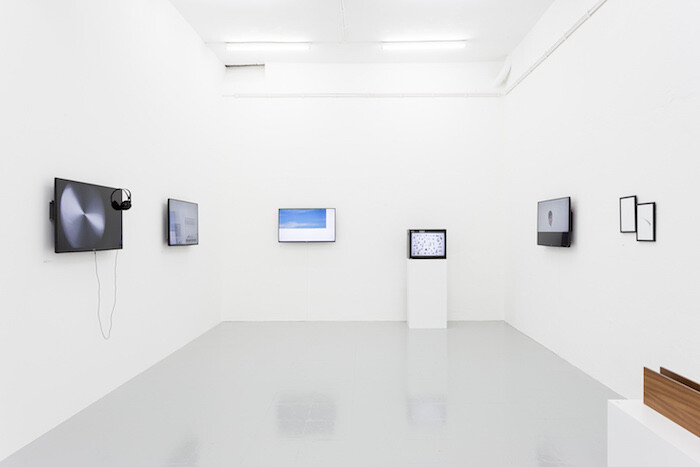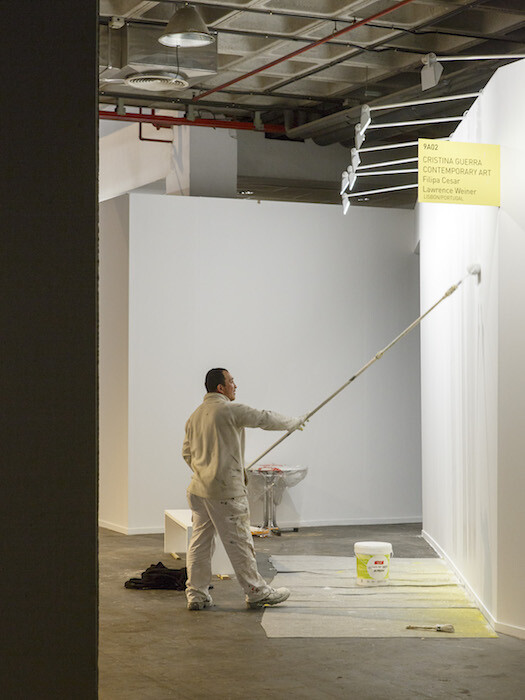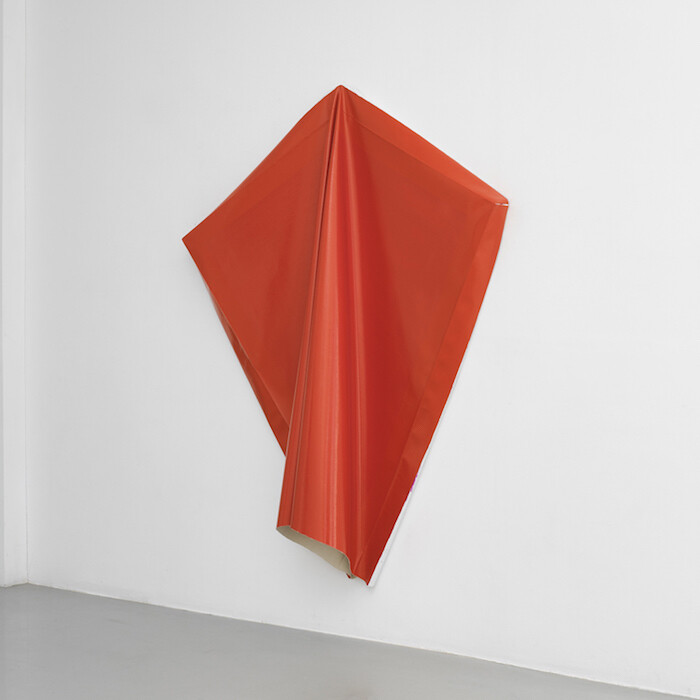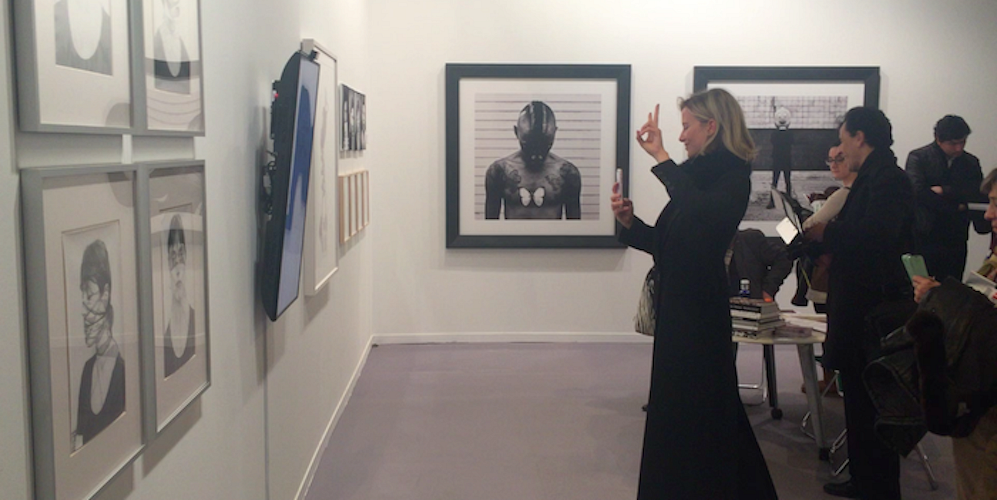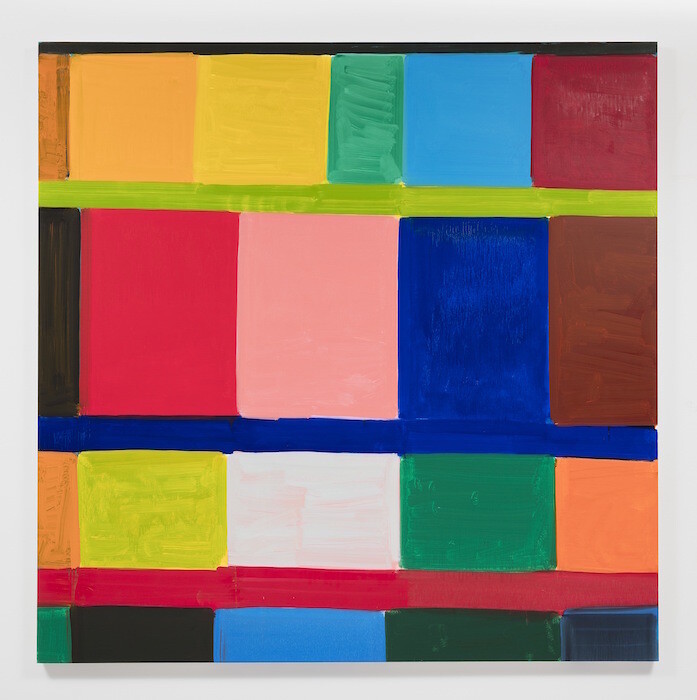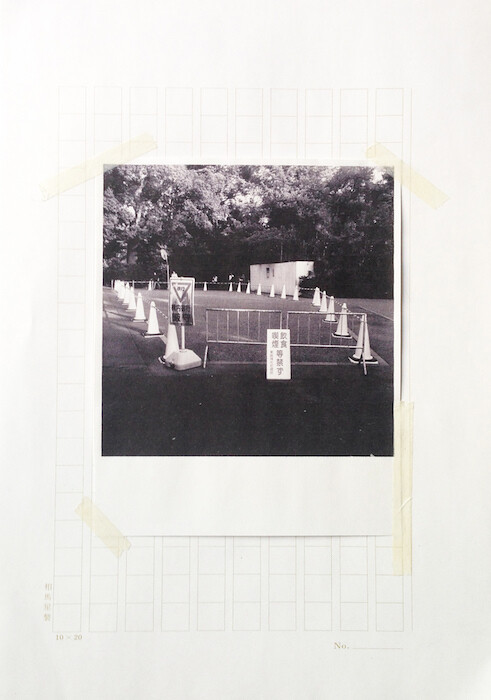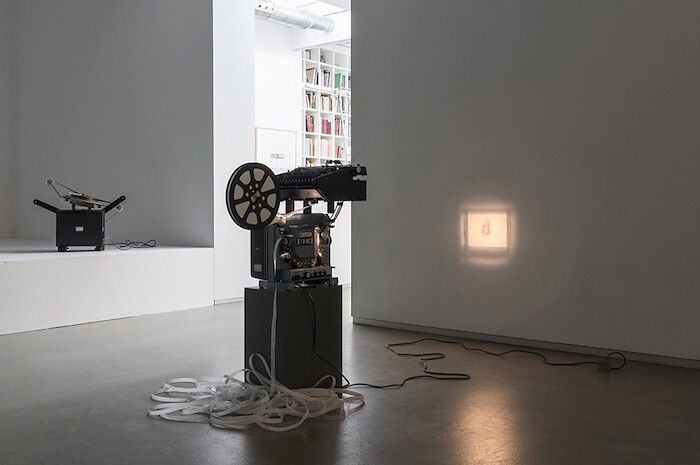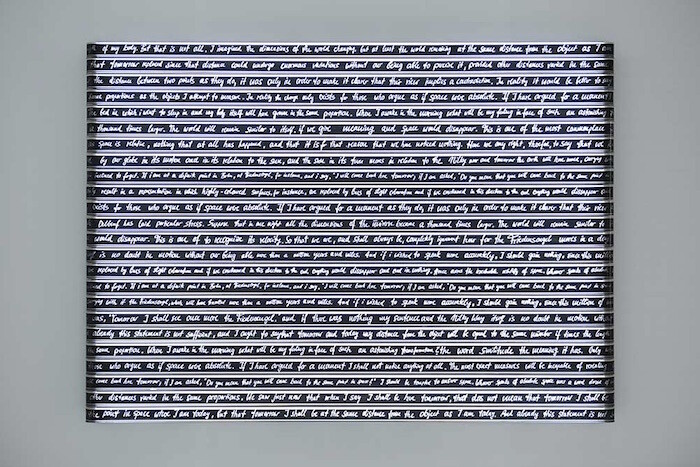The inaugural edition of ARCO Lisbon (May 26–29, 2016) was announced to the world on the same day that an anti-austerity alliance in Portugal’s parliament passed a vote to dissolve its center-right government. On the day that journalists came to preview the venue at which the fair would be held, the country’s new leftist coalition approved a budget that reversed many of the cuts imposed as a condition of Portugal’s bailout at the height of the Eurozone crisis in 2011.
It is difficult to overlook these coincidences of timing when an art fair is conceived of as an instrument of national economic policy, as our press trip to Portugal’s capital made abundantly clear. The country’s recent emergence from recession has been ascribed in part to booming tourism revenues,1 and now contemporary art is being enlisted—alongside Lisbon’s historic architecture, the proximity to the city of several golf courses, and the agreeable climate—as further incentive to assist its journey back from the brink of bankruptcy. Our precisely scheduled trip—which included visits to urban regeneration sites and bustling hotel restaurants, alongside a well-intentioned but uncomfortable tour of the city’s state-sponsored street art sites—seemed designed to make clear that Lisbon looks forward to welcoming the free-spending, jet-setting entrepreneur-collectors that are the tourist board imaginary of the audience for contemporary art.
The establishment of a fair in the city, and Lisbon’s hoped-for entry onto the contemporary art caravan’s itinerary,2 was figured by our guide as a further symbol of the country’s escape from its recent economic troubles with the assistance of international tourism and foreign investment. Yet it remains true that the brave new dawn recently embraced by the country’s electorate is founded upon the determination to claw back rights and privileges that had been swept away to appease the nation’s creditors. Portugal is still tethered to its recent history even as it tries to free itself from it, preoccupied (like the rest of Europe) by what constitutes progress when the left’s first objective is to reclaim the past. These conflicts are evident in the art being made and exhibited in the city.
At the grandly titled Kunsthalle Lissabon, a nonprofit exhibition space recently relocated to the city’s outskirts after a period of several years in which it occupied a shared space with a number of other artist-run initiatives such as Parkour and Barber Shop (which continues to have an itinerant existence), is a first solo show in Portugal by Iman Issa. “Reasonable Characters in Familiar Places” (January 12–April 2, 2016) comprises two discrete works, realized in spoken and printed words alongside static and moving images. The Revolutionary (2010) is an audio piece for which the attributes of a fictional “revolutionary” are narrated by the same generic text-to-speech voice responsible for the voiceover to Hito Steyerl’s How Not to be Seen: A Fucking Didactic Educational .MOV File (2013). This meditation on the word “revolutionary” suggests that the word has been emptied out of meaning by its historical overuse in the service of incompatible ends. What does it mean to be a “revolutionary” now? The word no longer carries any meaningful currency. The piece provides a fitting complement to Thirty-three stories about Reasonable Characters in Familiar Places (2011), a fiction composed in three parts. The first—a fragmentary text comprising dozens of brief, decontextualized memories or exchanges—can be read in the thin, plain books laid out upon a table. The videos, images, and sculptures scattered around the space serve as an oblique epilogue to the short stories contained within, complementing or in some cases seeming to contradict or complicate the images conjured by the text. The prevailing sense is of simple memories convoluted by recall; that the past is a foreign country, rather than a place one feels at home, is reinforced by an index of titles printed on the wall. Captions such as Museum, Home, School, and a Stranger’s House (Missing Detail 7)—which seem to bear little relationship to the work that they describe, or to depend on a piece of information denied to the viewer—heighten the sense of estrangement.
The work’s intelligent presentation—sparsely arranged across the space, on digital screens and minimalist headphones—exaggerates its insubstantiality. There is very little to cling onto, a sense of drift which extends to the Kunsthalle Lissabon’s own identity. Its website states its objective as being to “expand the general view of what constitutes an institution” by occupying a position both inside and outside of “institutional dynamics.” In simultaneously denying and acknowledging the organization’s status as an institution, the disclaimer concedes to familiar anxieties about critiquing a system in which one is implicated, and the position that such actors should occupy in an art world which seems increasingly bound up with national and transnational economic policies. Piling back onto our bus, the journalists felt able to sympathize.
The directors of Lisbon’s Galeria Zé dos Bois—a 20-year-old independent, nonprofit exhibition, theater, and event space in the city’s bustling Bairro Alto (recently the subject of a major prettification drive by the civic authorities)—are unequivocal about their position on the fringe. Housed in a ramshackle, labyrinthine eighteenth-century complex—complete with bookshop, open-air courtyard, cramped gig space, rooftop area (where films are projected against the white wall of a neighboring building), and two sprawling exhibition spaces—ZDB hosts an eclectic program of exhibitions, gigs, and performances. Five minutes’ walk away is a theater space in an ex-industrial building, where we interrupt a rehearsal for a forthcoming performance; a topless man is dancing with a potted plant to the accompaniment of a Portuguese guitar and live DJ. The spectacle only serves to endorse the curators’ defiant assertion that the institution occupies a place on the “periphery” (whether of Portuguese cultural life or the international art scene is moot). Alerted that the journalists are here to learn about the city’s creative institutions in advance of ARCO Lisbon, they rather mischievously offer up that they participated in ARCO Madrid a couple of times in the late 1990s, but “it wasn’t for us.”
ARCO Madrid might be understood as the geographic and symbolic center to which Lisbon and its arts institutions are peripheral. Yet like every establishment garrison in the art world, the 35-year-old institution longs for the glamour that is afforded to the young and the agenda-setting. The quest for a model that achieves relevance without compromising sales found expression at this year’s fair—held as always in a vast conference hall on the city’s outskirts—in an initiative entitled “Imagining Other Futures,” for which two artists from a gallery’s roster were presented in dialogue. Typically this meant that an established artist was paired with a younger one, an exchange of commercial and critical heft for a sprinkling of stardust. The results were mixed. From New York, TEAM Gallery’s decision to partner Cory Arcangel and Stanley Whitney on the basis of some superficial formal similarities was to the detriment of both, with the former’s “Photoshop Gradient Demonstrations” series (2008–) conspiring in this context to look like a cheap shot at Whitney’s expressive, conventionally painterly experiments in color, pattern, and form. Marian Goodman’s co-presentation of John Baldessari and Tino Sehgal was at least pleasingly anarchic, though you felt for the dancer enacting Sehgal’s choreography in a pitch black room while disorientated collectors bumped gigglingly about in the dark. Overall, the determination to tether the present to the past felt uncomfortable, a means of reclaiming artists who are attempting to be “revolutionary” in their practice as merely the latest stage in a broadly predictable (and therefore reliably bankable) art historical continuum.
The history of art, and the structures underlying its production, are inescapable at Rosa Barba’s “Thoughts of Sorts” at Parra & Romero, Madrid (February 25–April 23, 2016). The exhibition space is cluttered with antiquated, rattling projectors and webbed spools of celluloid film; visitors are endlessly stepping over wires, skirting around projected lights, worrying that a loose scarf might scrag on a length of magnetic tape stretched precariously across the floor between distant loops and bobbins. At the center of the floor squats a fleshy white egg whose surface seems to liquefy and ripple as the subwoofer within it beats a deep, low pulse. Where Iman Issa’s Lisbon show was defined by the separation of the image from the context of its production—the wires tucked discreetly behind walls much as the links between memory fragments were withheld from the viewer—Barba places the mechanics of film-making and memory at the very front and center. The show’s title takes inspiration from Georges Perec, who as a member of Oulipo sought to use the structures of language against itself, much as Barba allows viewers to see how the material means of production contribute to the content and meaning of the words, colors, and patterns that are thrown up against the gallery’s walls. “Thoughts of Sorts” suggests that if we want to change the way things are, we need first to understand the conditions that created them.
http://www.theportugalnews.com/news/bumper-tourism-year-expected/37227
ARCO Lisbon, which it is hoped will become an annual event, will take place at the Cordoaria Nacional and feature around 40 international galleries. A press release states that the fair will feature “artists who dialogue with Portuguese creators and reflect the natural connections with Spain and Brazil.”
